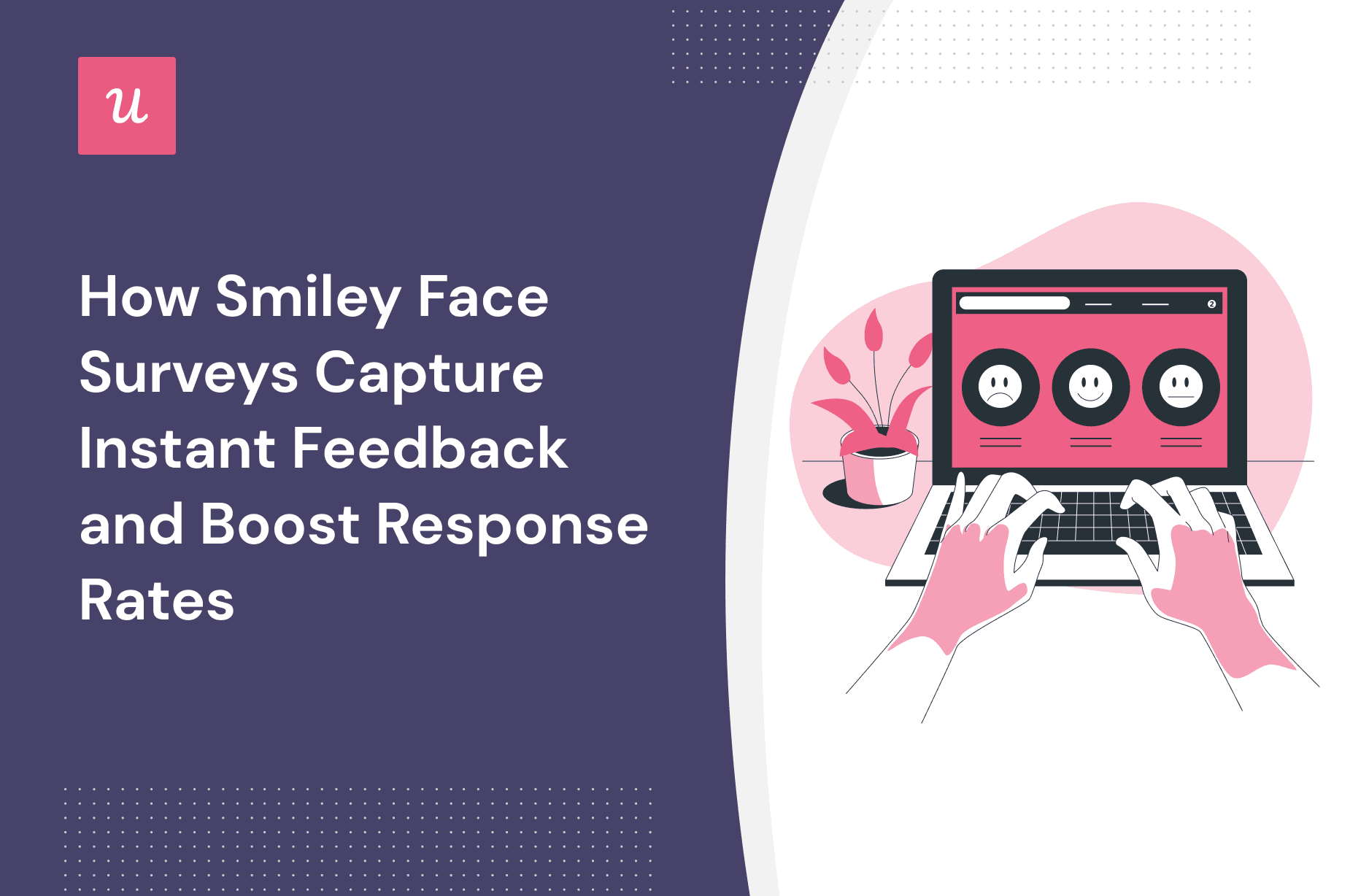
How Smiley Face Surveys Capture Instant Feedback and Boost Response Rates
Are you looking to quickly and accurately track user sentiment and determine how happy your customers are with your product or service? First, there were the thumbs up/down buttons. Today, there are smiley face surveys.
This article examines what a smiley face survey is, why it’s an excellent tool for collecting feedback and tracking customer satisfaction, and when/how to use them.
Try Userpilot Now
See Why 1,000+ Teams Choose Userpilot

What is a smiley face survey?
A smiley face survey is a type of customer feedback collection method that uses emojis (smiley faces) to measure customer satisfaction levels.
Often on a 3-point or 5-point scale, the survey ranges from a sad/angry face to a happy/smiling face. Customers can instinctively select facial expressions that match their emotional state, making surveys easy to answer and highly effective.
Why should you use smiley face surveys to collect feedback?
A smiley face rating scale has many advantages over regular scales like the number scale. Some of these include:
- It is engaging. Over 5 billion emojis are sent on FB messenger each day. People love them and respond to them. They’re also easy to complete. Using smiley faces is, thus, a great way to engage customers and increase response rates.
- It attracts honest feedback. Smiley face surveys attract accurate feedback from customers. For instance, customers may be reluctant to write negative feedback, but wouldn’t mind clicking a negative smiley face to share their emotions.
- It overcomes language barriers. Everyone understands what emotions a smiley face conveys. They’re self-explanatory visual content that anyone, even kids, can understand.
- It improves the customer experience. Smiley face surveys help you collect more (and highly accurate) feedback data, which you can act on to improve the customer experience.
- It helps you measure customer satisfaction. The smiley face rating scale helps you collect actionable feedback that improves the product experience. As you act on it, you improve customer satisfaction and customer loyalty.
When to use a smiley survey
You can use smiley face surveys to collect feedback and measure customer satisfaction whenever you want, including:
At every stage of the customer’s journey
Use smiley face surveys to track customer emotions across the customer journey, from awareness to advocacy. This is a great way to collect feedback on the user experience from website visitors and product users.
Launch a smiley survey at critical points that mark entry/exit from a specific journey stage. Survey responses will tell you how the customer feels about the product/website experience. Refer back to these responses to track the customer’s progress across stages.

After a specific interaction
Respondents spend less time answering smiley surveys, making them excellent tools for collecting instant feedback after a customer interacts with a feature/process.
Launch a survey after onboarding, when a user first uses a feature, after a user visits the Help Center, etc.
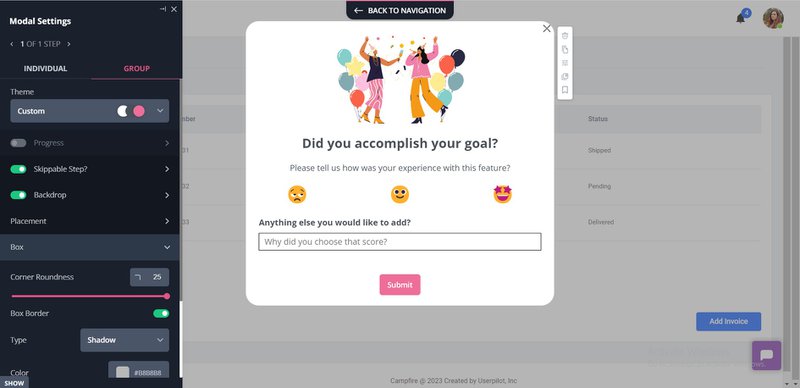
Such feedback will provide insight into the customer experience and feature performance. It will help you identify what the user likes and where they’re experiencing friction, giving you a chance to improve the feature and better the experience.
Send follow-up surveys after closing the loop
Addressing concerns in customer feedback is a surefire way to keep customers happy and drive customer satisfaction. Use follow-up surveys to close out the feedback loop.
A smiley face survey at the end of the loop helps you determine whether the user was satisfied with your resolution. You can extend the feedback further to identify other ways to improve customer satisfaction.
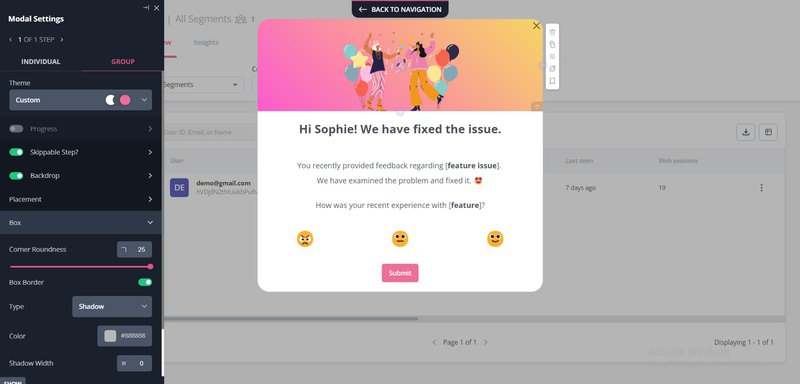
Types of smiley face surveys
There are different variations of the smiley face survey, some more elaborate than others. This includes:
- 5-point smiley face rating scale with smiley faces representing terrible, bad, average, good, and excellent.
- 4-point smiley face rating scale with smiley faces representing terrible, average, good, and excellent.
- 3-point smiley face rating scale with smiley faces representing terrible, average, and excellent.
- NPS (net promoter score) survey.
- Binary options rating scale for Yes/No, Happy/Unhappy, or Thumbs up/Thumbs down.
Smiley face survey questions
A smiley face survey question can have three answer options. They include:
- Only emojis: Get quick feedback on a survey question using only smiley faces. E.g: “How satisfied are you with our product?”
- Open-ended questions: Get more accurate feedback data by following up your smiley face rating scale with open-ended questions.
- Close-ended questions: Collect valuable insights using close-ended questions as part of your follow-up questions.
You can use open-ended questions to get more detailed survey responses when measuring customer satisfaction. Or, you could use close-ended questions to gain valuable insights to measure the app experience.
For instance, you could add written answer options to the question “How was your experience with {feature}?” to understand the category of problems users experienced the most.
Best practices when implementing smiley surveys
A simple smiley face survey can change how you analyze and understand customer satisfaction. Take full advantage of these surveys by adhering to the following best practices.
Write good smiley survey questions
The goal of any survey question should be to help you create better product experiences. A good smiley face survey question is clear, short, and easy to understand.
On the other hand, bad survey questions are misleading and framed in a way that creates bias and affects the objectivity of responses. This means you want to avoid:
- Leading questions: These questions are framed in a subjective rather than objective manner. For example, the question “How good is this product/feature?” assumes the user already considers the product to be good.
- Loaded questions: These questions make assumptions about the respondent, are often accusatory in nature, and give no room for a response. For example, “As a product manager, are you going to use this tool to improve product usage?”
- Double-barrelled questions: These are complex questions that require more than one answer. For example, the question “How would you rate the flow and content of the onboarding?” forces users to give one answer to two questions.
- Biased questions: These are questions that require one-directional answers. An example is the question, “Would you share us on social media?” which assumes the user is indeed on social media.
- Survey questions with jargon: These questions contain technical/confusing language which only insiders may know. For instance, “How was your experience with the CS Rep?” may confuse users who do not realize that CS means Customer Service.
Ultimately, the best survey question is personalized (i.e. asked only to qualified respondents), clearly outlines its purpose, and isn’t misleading or confusing in any manner.
Use clear smiley face rating scales
Rating scales help you assess a customer’s sentiment towards something. These sentiments can be positive or negative, and scales must reflect all possible sentiments.
For instance, customer satisfaction surveys may use number rating scales from 1-10 or 1-5 or wording scales that go from “Very unlikely” to “Very likely.” Your smiley face rating scales must follow similar principles.
Keep your rating scale balanced. For instance, you can have three options from a sad face to a happy face, or you could add more on both sides to express deeper emotions like anger or excitement.
Your answer options should be clear and unbiased. The user should be in no doubt about the available options. Include follow-up questions that are open-ended to elicit more nuanced responses.
Always close the feedback loop
A feedback loop is a five-step process that involves collecting feedback, analyzing it, acknowledging it, acting on it, and informing the customer of your resolution.
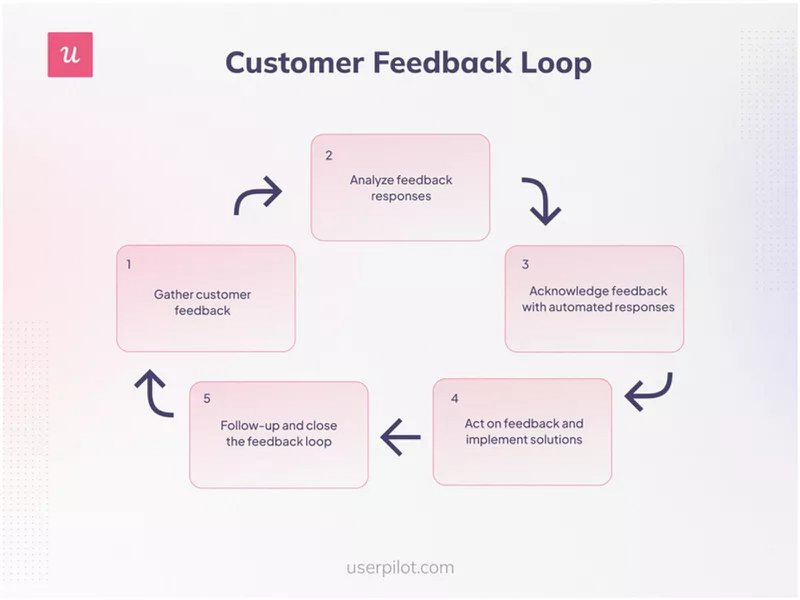
Close the loop by reaching out to users who provide actionable feedback. Even if you don’t take any actions, acknowledging receipt of the feedback tells users that you’re listening.
Likewise, informing them of the changes you’ve made based on their feedback tells them how much you value their feedback while also giving you the chance to improve the product.
How to create a smiley face survey with Userpilot
You can easily create smiley face surveys with Userpilot by following the steps:
- Go to your website.
- Activate the Userpilot chrome extension.
- Navigate to the page where the survey will appear.
- At the bottom left of the screen, click “Create New” > “Start Here.”
- Next, click “Create Flow,” give it a name, and click “Create.”
- At the bottom of the screen, click “Add UI Pattern” and select “Modal.”
- Now, select and customize an existing pattern template or create one from scratch.
- Add the appropriate smiley faces and customize the modal’s appearance and positioning.
- And, your smiley survey is good to go!
Watch the video below to see the steps in action and begin creating your own smiley face surveys.
Why use Userpilot to create smiley surveys?
Conducting online surveys and analyzing feedback data doesn’t have to be a hassle. Userpilot provides you with code-free tools to:
Collect customer feedback whenever you want
Choose when and where to collect feedback. You can launch a smiley face survey at the end of a flow, after an in-app experience (e.g onboarding), or after a specific interaction.
Take advantage of Userpilot’s custom events to specify the sequence of events that trigger a survey.
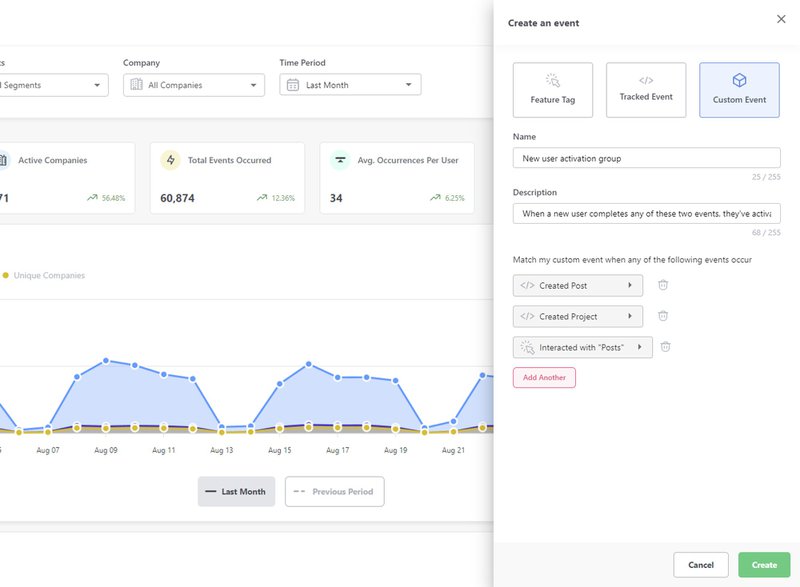
Create a branded survey design with various smiley faces
Userpilot’s extensive customization options allow you to customize your survey as you see fit, using your preferred UI elements, colors, emojis, background, text styling, etc.
Create your desired branded survey page by using elements and styling options that match your brand theme and colors. You can also choose where the survey appears on the page (top, bottom, central, etc.).
What’s more? All of this is done completely code-free.
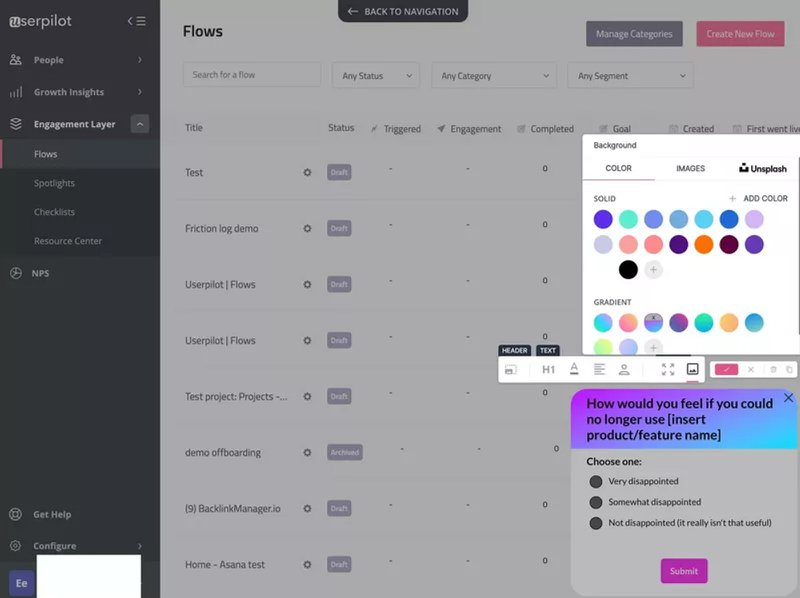
Benefit from other survey templates
Userpilot offers a series of built-in survey templates with customizable questions, potential answer options, follow-up questions, etc.
For instance, you’ll get access to a Net Promoter Score (NPS) survey template. You can tag responses and view them on an NPS dashboard to help you get an overview of the score, track the performance, and uncover trends.
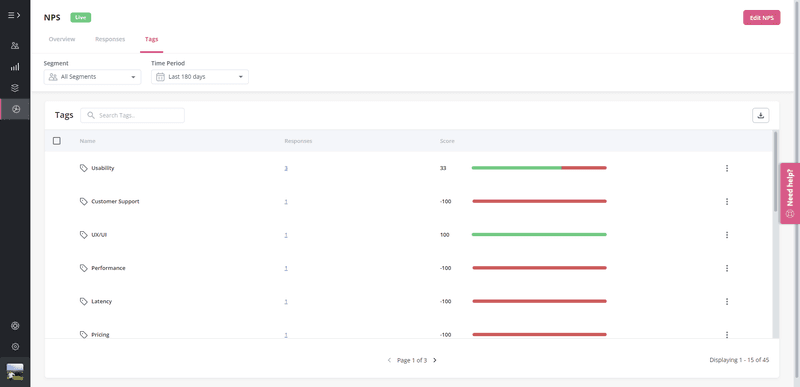
Customers can also trigger NPS on mobile! Effortlessly gather valuable user insights and boost satisfaction on-the-go.
Conclusion
Smiley face surveys are easy-to-answer, highly accurate customer feedback collection methods. They help you capture feedback quickly and give you a peek into unfiltered customer emotions.
Userpilot provides you with the tools for collecting feedback and analyzing it to improve customer satisfaction. Book a demo to learn more about how it helps you.






